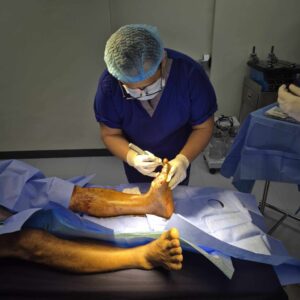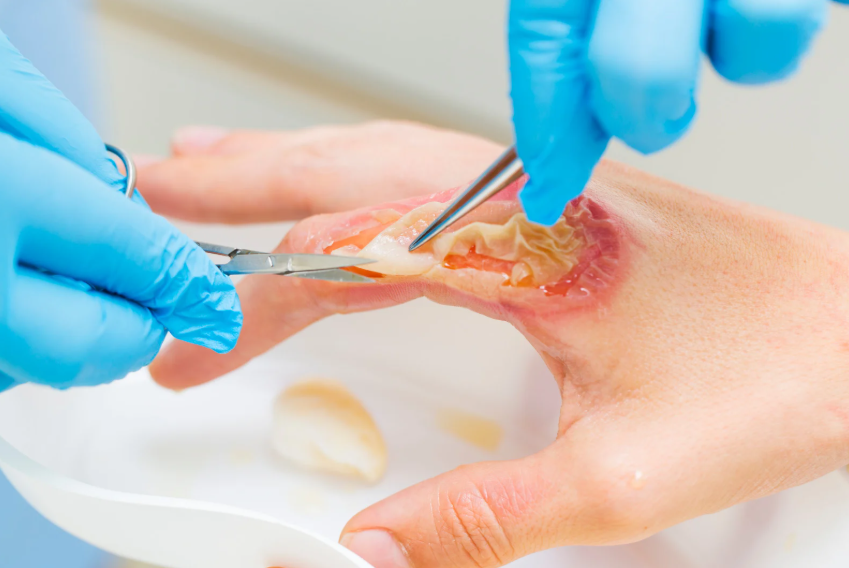Infected diabetic foot wounds can pose serious health risks and even lead to amputations if not properly managed. That’s why seeking prompt and expert orthopedic treatment is essential. Orthopedic Treatment for Infected Diabetic Foot Wounds offers a comprehensive solution aimed at stopping the spread of infection, supporting structural integrity, and enhancing wound healing. As patients undergo this treatment, recognizing the signs of healing becomes critical. Tec Orthopedics stands out as the top provider of such care, delivering expert solutions and close monitoring throughout the healing process.
Understanding Orthopedic Treatment for Diabetic Foot Infections
Orthopedic Treatment for Infected Diabetic Foot Wounds involves the specialized management of soft tissue and bone infections caused by diabetes-related complications. This type of treatment can include surgical debridement, infection control, realignment of foot structure, and even reconstruction if needed. Tec Orthopedics offers a multidisciplinary approach, combining surgical expertise with wound care best practices to maximize healing potential. With their tailored strategies, patients benefit from faster recovery and a reduced risk of recurrence.
Key Signs That Indicate Healing
One of the first signs of improvement after Orthopedic Treatment for Infected Diabetic Foot Wounds is reduced redness and swelling. This indicates that inflammation and infection are subsiding. Another promising sign is a noticeable decrease in wound drainage or pus, showing that the body is effectively fighting off bacteria. The appearance of healthy granulation tissue—pink, bumpy, and moist—is another indicator that the wound is actively healing. Patients may also observe the wound size shrinking over time, as tissue regeneration progresses. Pain may become less intense or change in character, reflecting reduced nerve irritation and healing progress. Additionally, patients may gradually regain mobility and tolerate some weight-bearing, a positive sign of musculoskeletal recovery supported by Tec Orthopedics’ structured rehabilitation guidance.
Warning Signs That Require Medical Attention
While signs of healing are encouraging, it’s vital to remain vigilant. Not all changes are positive, and some may suggest complications. If you notice increased redness, sudden swelling, foul-smelling discharge, or experience fever, it may indicate a worsening infection. Such symptoms should prompt immediate reassessment. Tec Orthopedics emphasizes patient education so individuals know when to seek urgent care, ensuring optimal outcomes from Orthopedic Treatment for Infected Diabetic Foot Wounds.
The Role of Follow-Up Care in the Healing Process
Follow-up care is crucial after Orthopedic Treatment for Infected Diabetic Foot Wounds. Regular appointments help track healing progress through clinical evaluations, wound measurements, and imaging if necessary. At Tec Orthopedics, follow-ups are an integral part of the treatment protocol. These sessions allow the care team to adjust offloading devices, update dressings, and reinforce blood sugar control, all of which are vital to sustained healing.
Tips to Support Healing at Home
Patients receiving Orthopedic Treatment for Infected Diabetic Foot Wounds must take an active role in their recovery. Proper foot hygiene, including regular dressing changes and wound inspection, helps prevent reinfection. Eating a well-balanced diet rich in protein and vitamins supports tissue repair. Staying hydrated, avoiding smoking, and adhering to Tec Orthopedics’ recommended offloading techniques—such as using orthopedic footwear or crutches—can significantly accelerate healing. Their team provides detailed at-home care instructions to keep progress on track.
Takeaway
Recognizing the signs of healing is an important part of recovering from Infected Diabetic Foot Wounds. Indicators such as reduced swelling, healthy granulation tissue, smaller wound size, and improved mobility all point to effective Orthopedic Treatment for Infected Diabetic Foot Wounds. Partnering with Tec Orthopedics ensures that patients receive the highest level of care, ongoing monitoring, and expert advice throughout their journey. By staying attentive and proactive, patients can achieve full recovery and reduce the risk of future complications.











